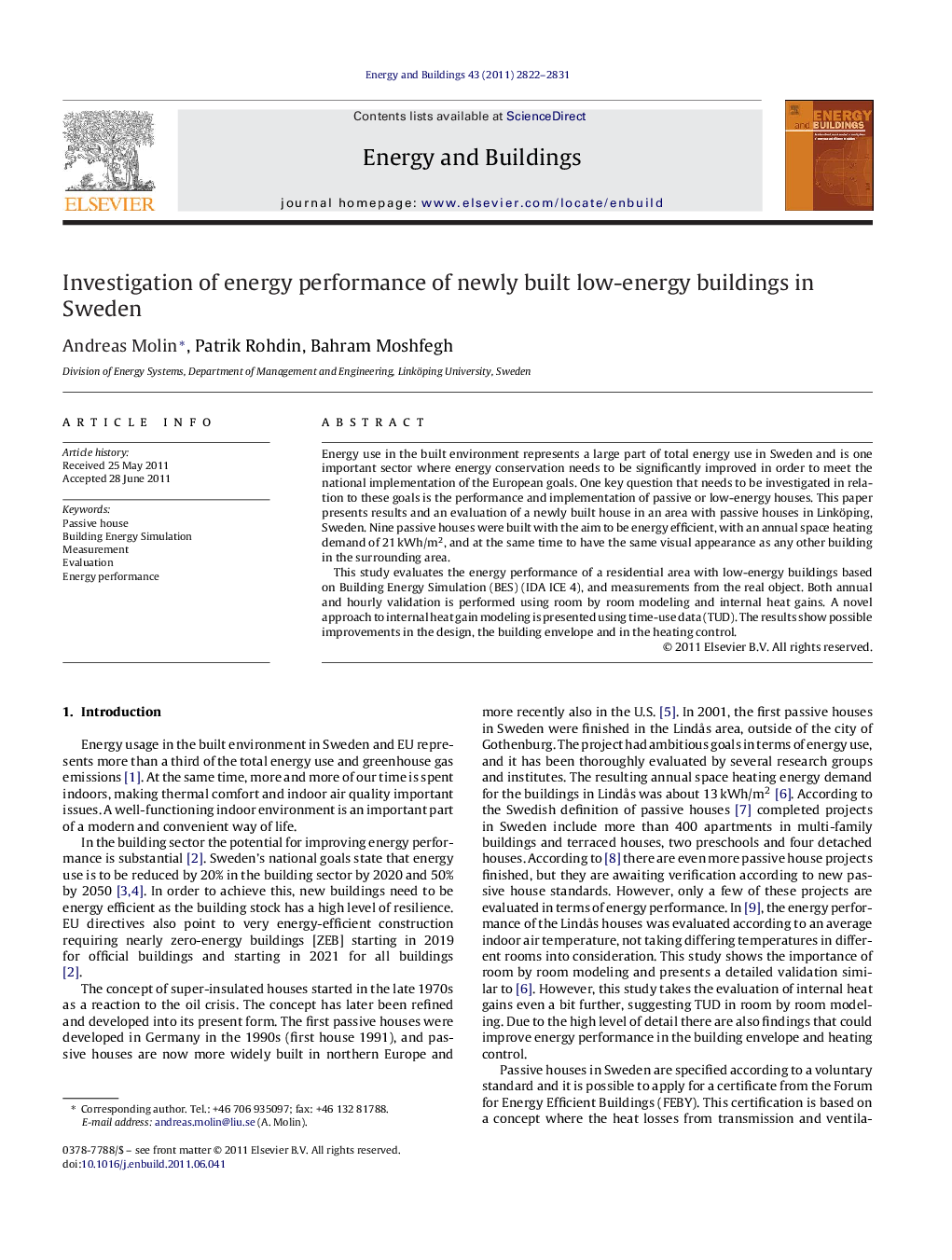| Article ID | Journal | Published Year | Pages | File Type |
|---|---|---|---|---|
| 264094 | Energy and Buildings | 2011 | 10 Pages |
Energy use in the built environment represents a large part of total energy use in Sweden and is one important sector where energy conservation needs to be significantly improved in order to meet the national implementation of the European goals. One key question that needs to be investigated in relation to these goals is the performance and implementation of passive or low-energy houses. This paper presents results and an evaluation of a newly built house in an area with passive houses in Linköping, Sweden. Nine passive houses were built with the aim to be energy efficient, with an annual space heating demand of 21 kWh/m2, and at the same time to have the same visual appearance as any other building in the surrounding area.This study evaluates the energy performance of a residential area with low-energy buildings based on Building Energy Simulation (BES) (IDA ICE 4), and measurements from the real object. Both annual and hourly validation is performed using room by room modeling and internal heat gains. A novel approach to internal heat gain modeling is presented using time-use data (TUD). The results show possible improvements in the design, the building envelope and in the heating control.
▶ Detailed building simulation and measurements of low-energy residential in Sweden. ▶ Evaluation shows space heating demand of 21 kWh/m2 y. ▶ Internal heat gains are in special focus, since they have major impact on energy use. ▶ Possible improvement in duct layout, air-tightening & heat exchanger control is presented.
